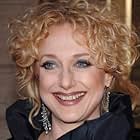
The 3 Guys Podcast
Recorded on 7/26/2023
Come with us to a world where true love triumphs, miracles are fact and swordplay is art. This is the realm of our latest podcast movie review of The Princess Bride. Join us as we dive into the heart of one of the most beloved take of all time. Let the grand adventure begin! WARNING: There will be Spoilers.
The 3 Guys Rating
Rated 4.5 out of 5
Notes From The Show
The Princess Bride
| October 9, 1987 (United States)
 8
8
 8
8
Photos
See all photos >>
Videos
See all videos >>
Cast
See full cast >>
Countries: United StatesLanguages: EnglishBudget: $16,000,000 (estimated)
Source: imdb.com
Note: All images are property of their respected owners and used for editorial purposes.
The Princess Bride
| October 9, 1987 (United States)
Summary: A bedridden boy's grandfather reads him the story of a farmboy-turned-pirate who encounters numerous obstacles, enemies and allies in his quest to be reunited with his true love.
Countries: United StatesLanguages: English
Source: imdb.comDisclaimer: This plugin has been coded to automatically quote data from imdb.com. Not available for any other purpose. All showing data have a link to imdb.com. The user is responsible for any other use or change codes.

































